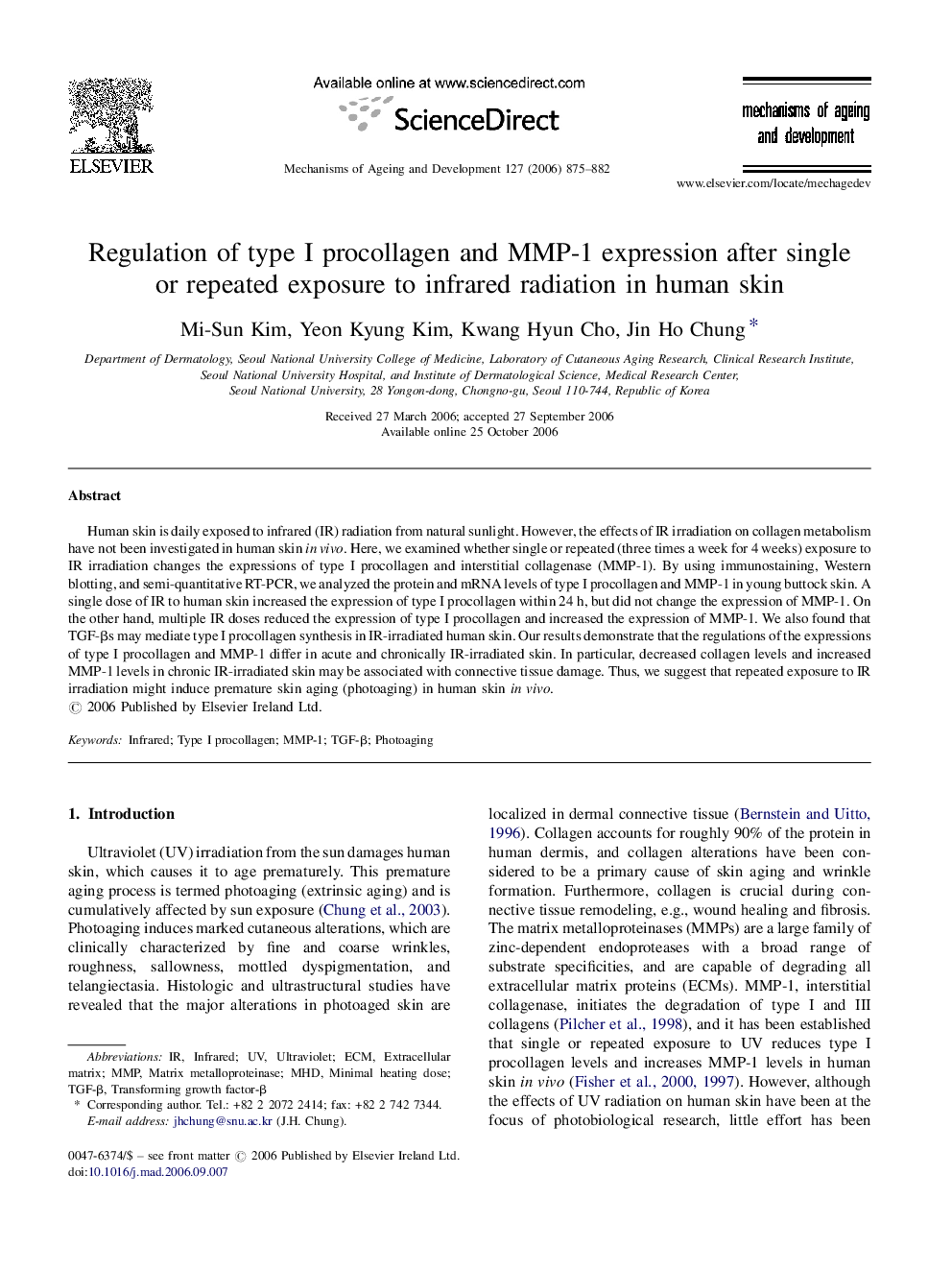| Article ID | Journal | Published Year | Pages | File Type |
|---|---|---|---|---|
| 1919700 | Mechanisms of Ageing and Development | 2006 | 8 Pages |
Human skin is daily exposed to infrared (IR) radiation from natural sunlight. However, the effects of IR irradiation on collagen metabolism have not been investigated in human skin in vivo. Here, we examined whether single or repeated (three times a week for 4 weeks) exposure to IR irradiation changes the expressions of type I procollagen and interstitial collagenase (MMP-1). By using immunostaining, Western blotting, and semi-quantitative RT-PCR, we analyzed the protein and mRNA levels of type I procollagen and MMP-1 in young buttock skin. A single dose of IR to human skin increased the expression of type I procollagen within 24 h, but did not change the expression of MMP-1. On the other hand, multiple IR doses reduced the expression of type I procollagen and increased the expression of MMP-1. We also found that TGF-βs may mediate type I procollagen synthesis in IR-irradiated human skin. Our results demonstrate that the regulations of the expressions of type I procollagen and MMP-1 differ in acute and chronically IR-irradiated skin. In particular, decreased collagen levels and increased MMP-1 levels in chronic IR-irradiated skin may be associated with connective tissue damage. Thus, we suggest that repeated exposure to IR irradiation might induce premature skin aging (photoaging) in human skin in vivo.
